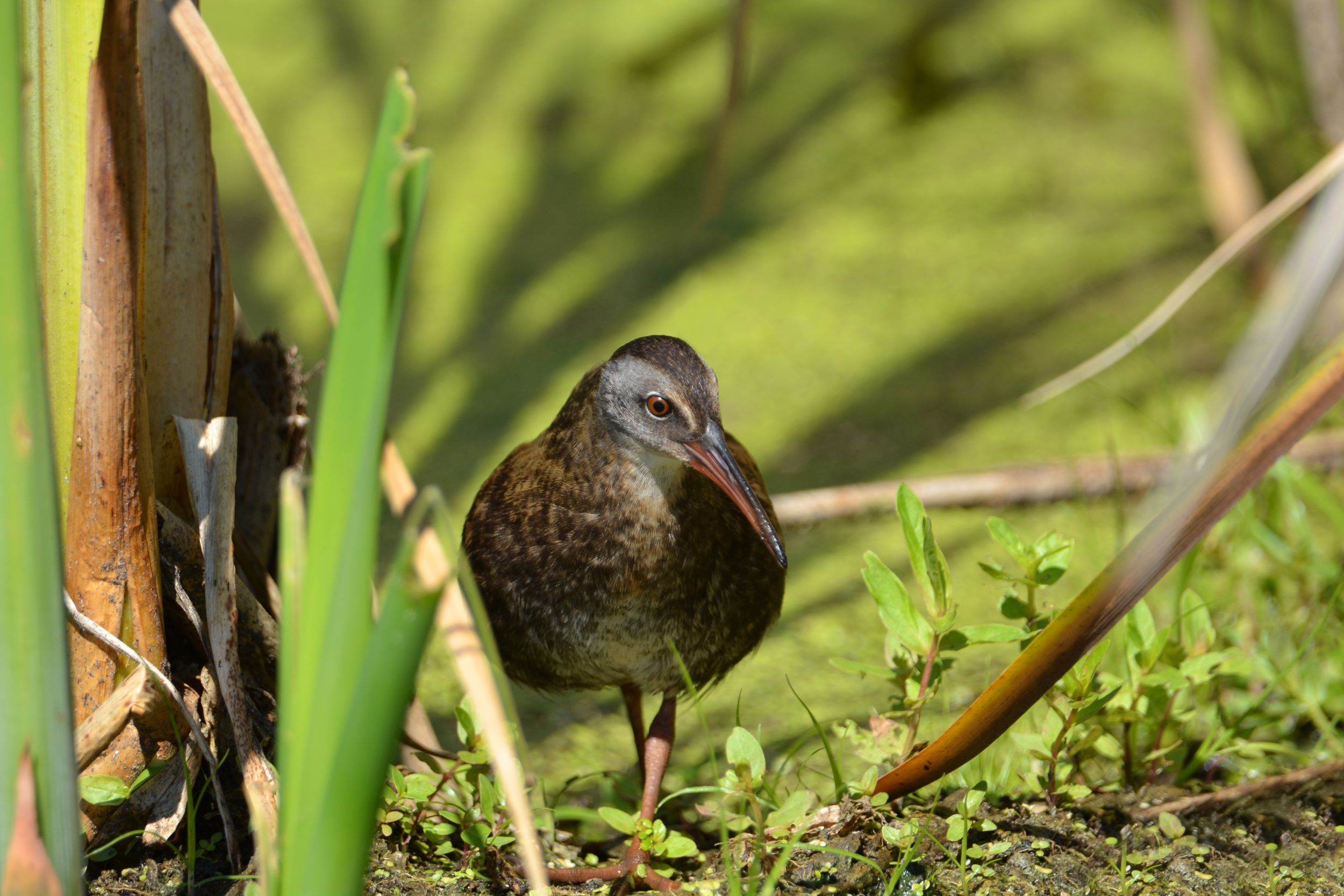
Exploring the World of Rails, Gallinules, and Coots in Utah: The Rallidae Family
The Rallidae family, comprising the diverse and often overlooked species of rails, gallinules, and coots, represents a unique and vital component of the avian world within the Gruiformes order. In Utah, these birds are particularly associated with wetland habitats, where their presence offers a fascinating window into the adaptability and diversity of bird species. The state's varied wetland environments, which range from the expansive marshes of the Great Salt Lake to more secluded freshwater ponds and river wetlands, provide critical habitats for these species. This diversity of ecosystems makes Utah an important and significant location for bird enthusiasts and researchers alike. Within this family, the rails are known for their elusive nature, often heard but rarely seen as they navigate the dense vegetation of their marshy homes. Gallinules, with their distinctive coloration and vocal calls, add a splash of vibrancy and auditory interest to these environments. Meanwhile, coots, easily identifiable by their unique swimming techniques and social behavior, are often seen in open waters, adding to the dynamic nature of these aquatic ecosystems.
Each species within the Rallidae family brings its own unique set of behaviors and habitat preferences, yet all share a common ability to thrive in the wetland ecosystems of Utah. The rails, including species like the Virginia Rail and Sora, are masters of camouflage and stealth, moving silently through reeds and cattails. Their cryptic behavior makes them a challenging but rewarding sight for birdwatchers. Gallinules, such as the Common Gallinule, stand out with their striking plumage and are often more accessible for observation. They are known for their 'walking on water' ability, where they use their long-toed feet to walk across floating vegetation. The American Coot, perhaps the most familiar of the family, can be seen in large numbers, especially during the winter months when northern populations migrate to Utah's milder climates. These birds, with their distinctive white bills and lobed toes, are a common sight in many of Utah's wetland areas, where they can be observed foraging, swimming, and interacting in large flocks. Collectively, the members of the Rallidae family contribute to the ecological health of Utah's wetlands, playing roles in controlling insect populations, dispersing seeds, and serving as indicators of environmental health. Their presence in Utah's wetlands is a testament to the importance of preserving these habitats, not only for the sake of the birds themselves but also for the overall health of the ecosystem.
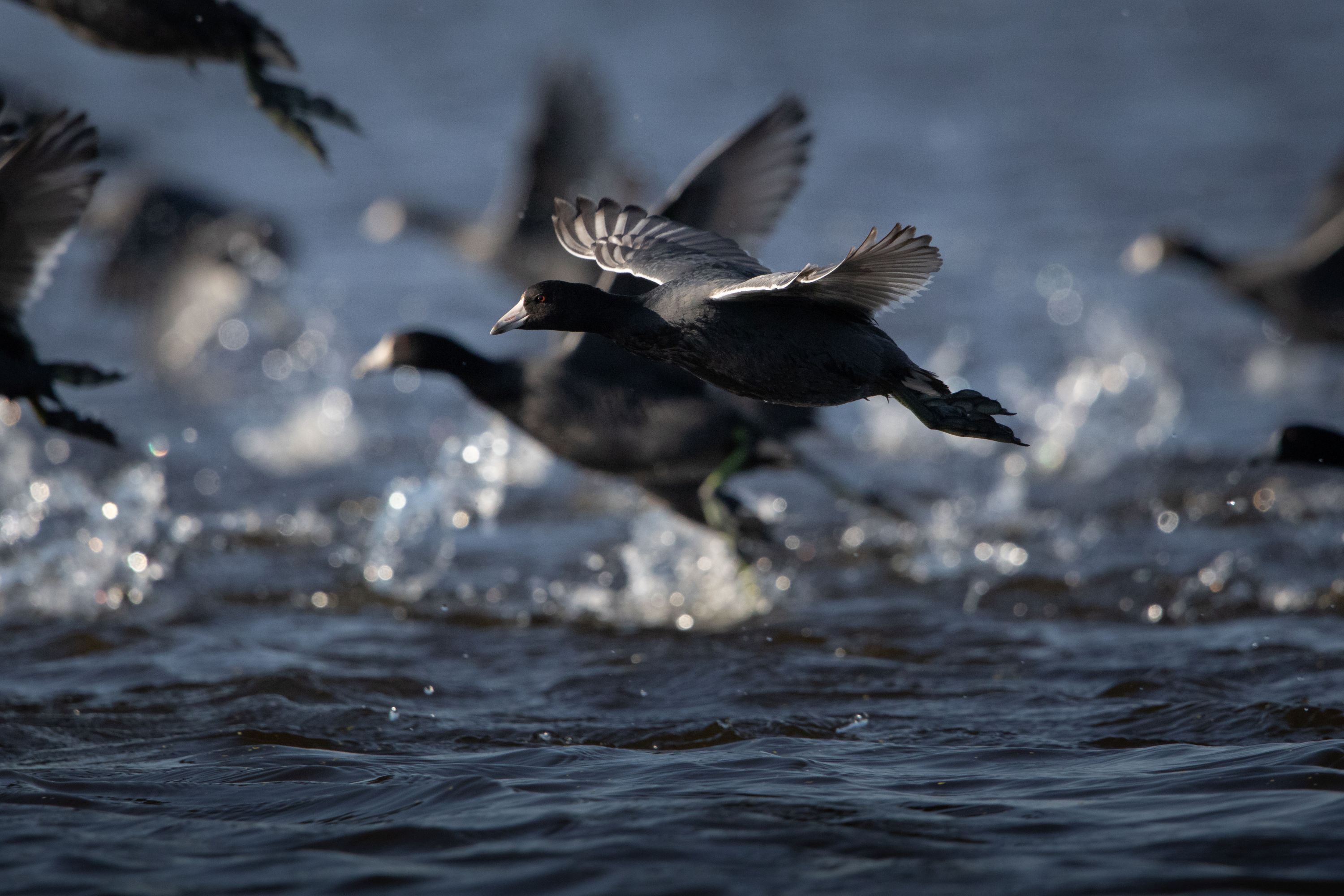
American Coots in Utah
In the diverse wetland habitats of Utah, the American Coot (Fulica americana) is a common and easily recognizable bird. As members of the Rallidae family, these coots are known for their distinctive appearance, which includes a dark, slate-gray body contrasted sharply by a stark white bill and a white frontal shield. Unlike their waterfowl counterparts, American Coots do not have webbed feet. Instead, they are equipped with unique lobed toes, an adaptation that aids them in navigating both aquatic and marshy terrestrial environments with ease. These physical adaptations are a testament to their evolutionary journey, making them well-suited to the varied wetland environments of Utah. As year-round residents, they are a familiar sight across the state's wetlands; however, their population notably increases during the winter. This seasonal change is due to the migration of coots from colder northern regions seeking Utah's milder winter climates. During this time, they are often found in large, sociable flocks, congregating in ice-free water bodies where food is abundant.
The prime locations for observing American Coots in Utah are as diverse as their habitats. The expansive wetlands around the Great Salt Lake, including the Farmington Bay Waterfowl Management Area and the Bear River Migratory Bird Refuge, are particularly renowned for their significant coot populations. These areas provide a blend of open waters and marshy edges, ideal for coots to forage and socialize. During the winter months, these birds are often seen in impressive numbers, dotting the open waters or moving along the muddy shores in search of food. Their diet is varied, consisting of plant materials like algae and seeds, as well as insects and small aquatic creatures. Observers can often witness the coots' unique feeding behavior, which includes both dabbling at the water's surface and diving for food. Additionally, the social dynamics of coot flocks are fascinating to watch. They are known for their territoriality and complex social interactions, especially during the breeding season when males become more aggressive in defending their space. The American Coot's adaptability to both water and land, coupled with their distinctive appearance and behaviors, make them a captivating subject for birdwatchers and nature enthusiasts exploring Utah's rich wetland ecosystems.
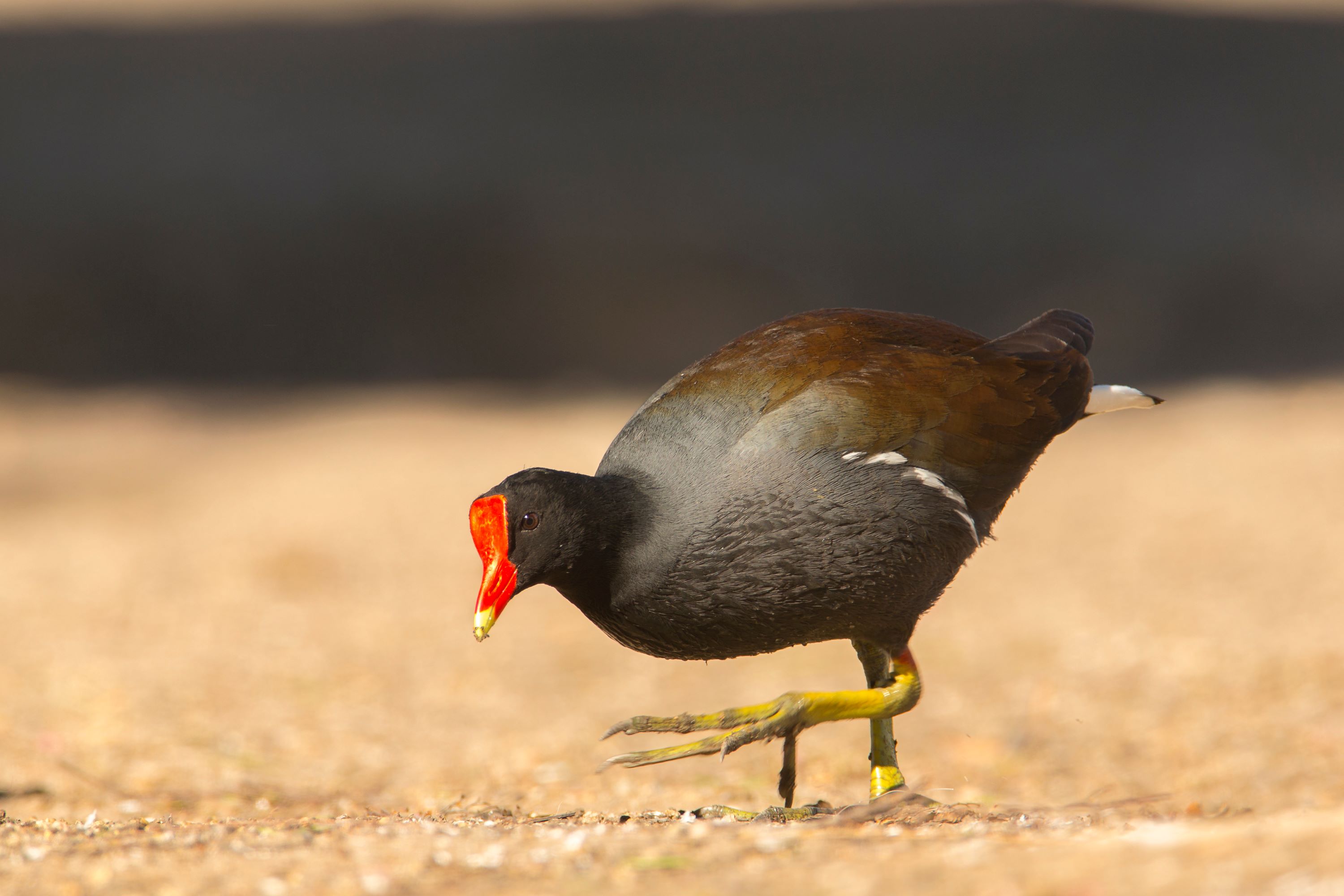
Common Gallinules in Utah
The Common Gallinule (Gallinula galeata), an occasional but vibrant visitor to Utah's wetlands, brings a splash of color and activity to these ecosystems. These birds, easily identified by their striking red and yellow bill and frontal shield, stand out amidst the more subdued hues of the wetland flora. They have a distinctive appearance, with their mostly dark plumage and a white stripe along their flanks, which adds to their visual appeal. In Utah, the Common Gallinule is primarily a summer resident, thriving in the state's marshy areas that are rich in vegetation. This preference for lush, vegetative environments provides them with ample food sources and necessary cover for nesting and protection from predators. During the warmer months, when the state's wetlands are teeming with life, these gallinules become more active and visible, making it the ideal time for birdwatchers and nature enthusiasts to observe them.
In terms of habitat, the wetlands surrounding the Great Salt Lake, including areas like the Farmington Bay Waterfowl Management Area, and the Bear River Migratory Bird Refuge, serve as excellent locales for spotting the Common Gallinule. These areas offer a blend of open water and dense vegetation, providing ideal conditions for gallinules to feed, nest, and raise their young. Observers might spot these birds swimming gracefully in open waters, where they use their long-toed feet to paddle, or see them deftly walking across floating vegetation. The diet of the Common Gallinule is quite diverse, consisting of various aquatic plants, seeds, and small invertebrates. Their feeding behavior can often be observed as they peck and forage among the water's vegetation. During the breeding season, their behavior becomes even more pronounced, with males displaying territorial aggressiveness and both sexes actively participating in nest-building and the care of their young. Nests are typically built just above the water, hidden among reeds or other dense vegetation, and are constructed from plant materials found in their surroundings.
For birdwatchers in Utah, observing Common Gallinules provides a unique opportunity to witness the adaptability and behaviors of these waterfowl. Their presence in the state's wetlands not only adds to the biodiversity of these areas but also highlights the importance of preserving these vital habitats for a range of species. Whether seen foraging for food, performing breeding displays, or tending to their nests, the Common Gallinule offers a glimpse into the intricate and vibrant life that thrives in Utah's marshlands.
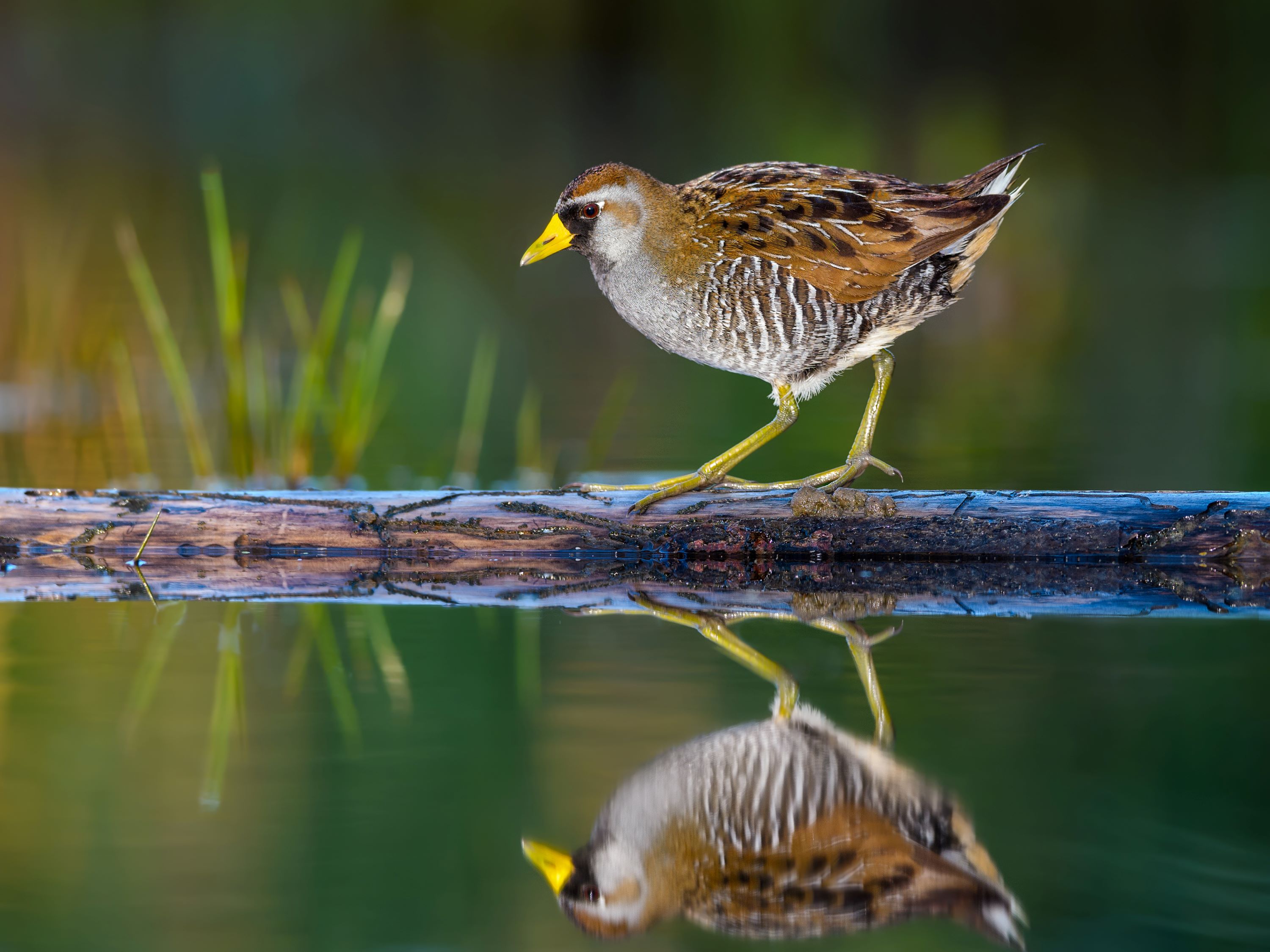
Soras in Utah
The Sora (Porzana carolina), a diminutive yet significant member of the Rallidae family, adds a layer of mystery to Utah's wetland ecosystems. These birds, with their unassuming brownish plumage and distinctive short yellow bill, are perfectly adapted to life in dense, marshy vegetation, making them elusive to both predators and birdwatchers. In Utah, Soras find an ideal habitat in the state's lush marshlands, where they can remain hidden among reeds and cattails. The Sora's plumage blends seamlessly with the browns and greens of the wetland flora, an adaptation that not only aids in their survival but also makes them a challenge to observe. During the breeding season in the spring and early summer, Soras become more active and vocal, which is the best opportunity for bird enthusiasts to detect their presence.
In Utah, the Great Salt Lake wetlands, including the Farmington Bay Waterfowl Management Area, serve as prime habitats for Soras. These areas provide the dense vegetation cover and shallow waters that Soras need for foraging and nesting. During the breeding season, their distinctive, high-pitched calls, often described as a whinnying or a descending whir, can be heard emanating from the marshes. These calls are a key indicator of their presence and are used by males to attract mates and establish territories. For birdwatchers, the challenge lies in patiently waiting and quietly listening to pinpoint the location of these vocal but hidden birds. Sightings often require a keen eye, as Soras may briefly emerge at the water's edge to forage or move between patches of cover. Their diet primarily consists of seeds, insects, and small aquatic invertebrates, which they deftly pick from the water's surface or mud. Birdwatchers hoping to catch a glimpse of a Sora should visit these wetland areas during early morning or late evening hours when the birds are most active. Binoculars and a quiet approach are essential, as Soras are easily disturbed and quick to retreat back into the safety of dense vegetation. Spotting a Sora, with its subtle beauty and intriguing behavior, is a rewarding experience for bird enthusiasts and adds a deeper appreciation for the diverse avian life inhabiting Utah's wetlands.
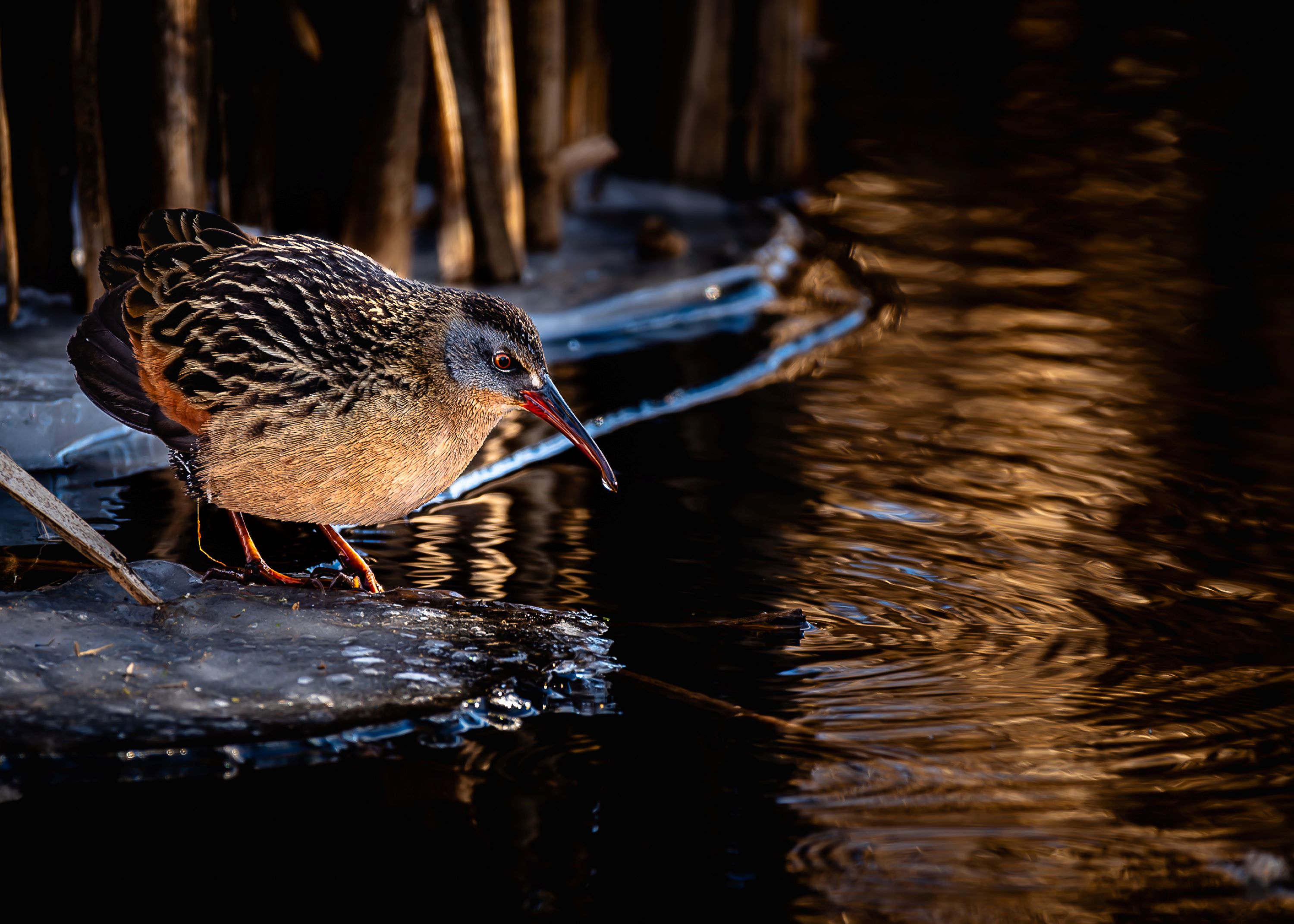
Virginia Rails in Utah
The Virginia Rails (Rallus limicola), residing in Utah's wetland ecosystems, are a notable representation of the state's avian diversity. These birds, characterized by their cinnamon-brown plumage and distinct vocalizations, are elusive inhabitants of marshy areas. Their preference for dense wetland vegetation makes them a challenge for birdwatchers to spot, adding an element of excitement and intrigue to birding in these habitats. Virginia Rails are particularly active during their breeding season in spring and early summer, making this the optimal time for observation. During this period, their vocalizations become more frequent and varied, including a series of grunts and kek calls, which are often the only indication of their presence within the thick marsh vegetation.
In Utah, prime locations for observing Virginia Rails include the extensive wetlands surrounding the Great Salt Lake, such as the Farmington Bay Waterfowl Management Area and the Bear River Migratory Bird Refuge. These areas offer the perfect mix of shallow water and dense vegetation that Virginia Rails prefer for nesting and foraging. Enthusiasts hoping to catch a glimpse of these elusive birds should approach their habitats quietly and patiently, as Virginia Rails are sensitive to disturbance. Early morning or late evening are typically the best times for birdwatching, as these are periods of peak activity for many bird species, including the Virginia Rail. Birdwatchers should focus on listening for the distinctive calls of the Virginia Rail, as spotting them visually can be challenging. A successful sighting of these secretive birds is a rewarding experience, offering a rare glimpse into the lives of one of Utah's more cryptic wetland inhabitants.
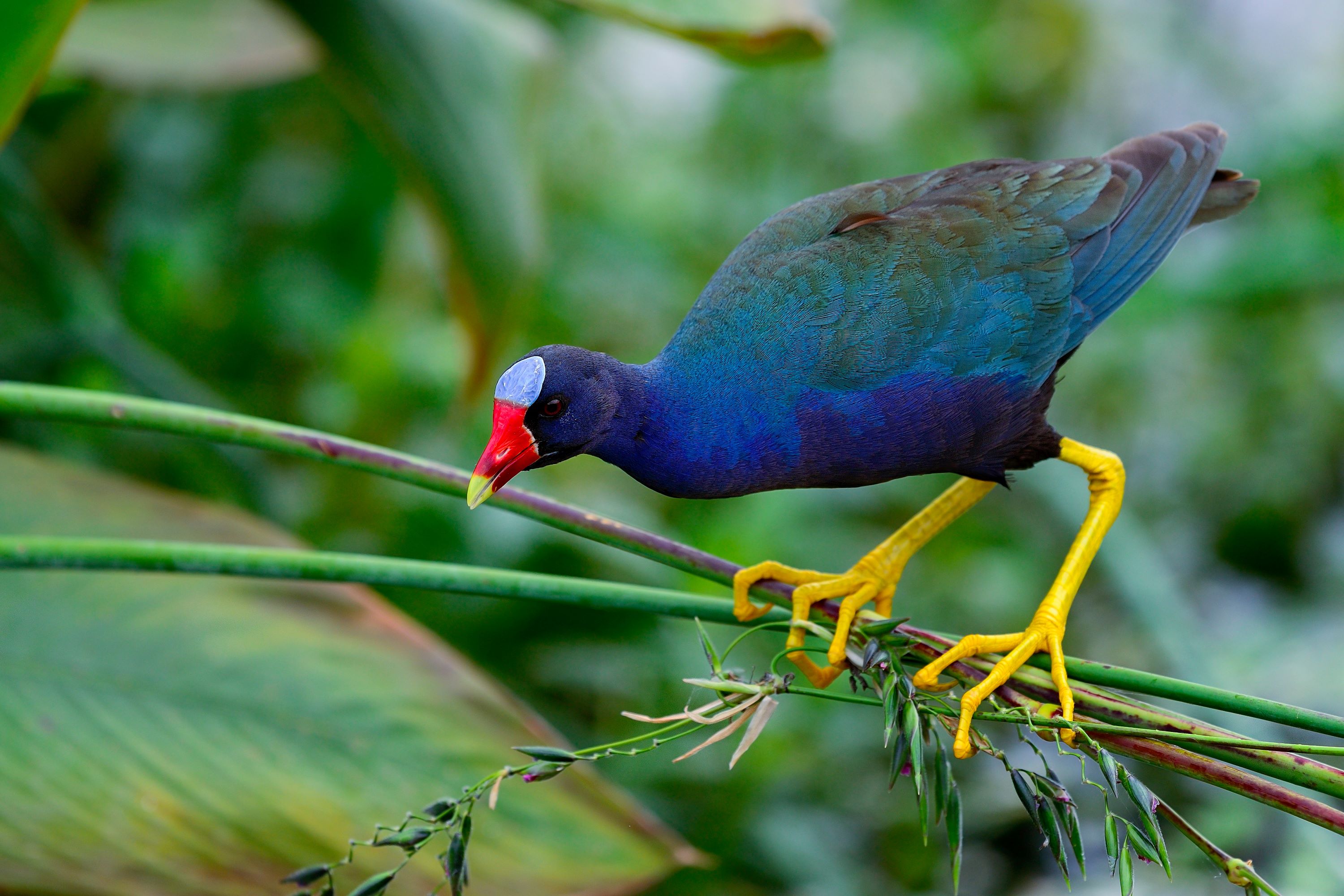
The Purple Gallinule in Utah: A Rare Visitor
The appearance of the Purple Gallinule (Porphyrio martinicus) in Utah is an exceptional event, given its typical habitat in the southeastern United States. This vibrantly colored bird, with its iridescent blue-green plumage, bright yellow legs, and striking red and yellow bill, is a rare sight in the state, classified as an accidental species. The Purple Gallinule, a member of the rail family, prefers warm, marshy environments rich in vegetation, such as those found in its usual range. In Utah, its presence is so unusual that each sighting becomes a noteworthy occurrence for the state's birdwatching community. One such rare instance was recorded at the Jordanelle Wetlands on July 24, 2004, a significant observation due to the bird’s usual habitat preferences. Prior to this, the last recorded sighting in Utah was in 1939 in Salt Creek Canyon, east of Nephi. The Purple Gallinule’s sporadic appearances in Utah are likely due to vagrancy, where individual birds venture far outside their typical range, possibly due to weather influences or navigational anomalies during migration. These rare visits offer birdwatchers and ornithologists in Utah a unique and unexpected opportunity to observe and appreciate a species that is otherwise a rarity in the region.
Summary
The presence of the Rallidae family in Utah, including American Coots, Common Gallinules, Soras, Virginia Rails, and the occasional Purple Gallinule, highlights the state's role as a crucial habitat for diverse wetland bird species. These birds, each with their distinct characteristics and behaviors, play significant roles in the ecosystem, contributing to the ecological balance of their habitats. The wetlands of Utah provide not only vital resources for these species but also excellent opportunities for